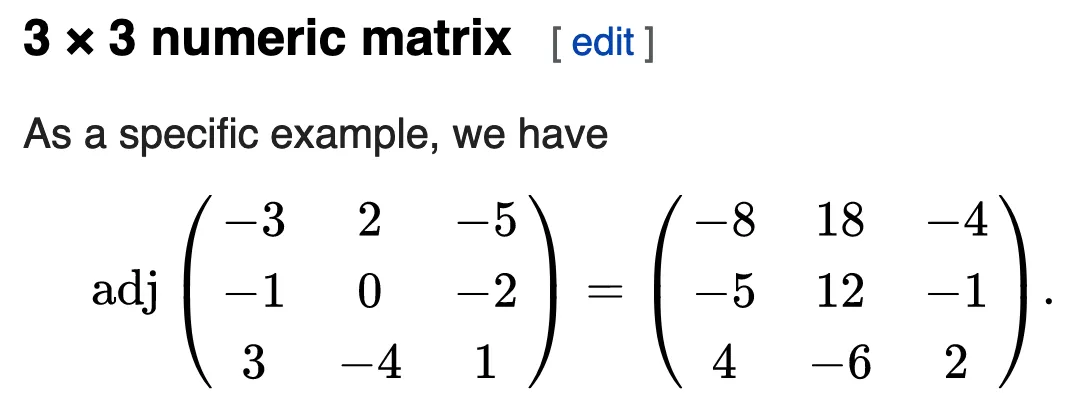我想在Julia 1.0中计算经典伴随。
为此,我复制了作为示例给出的矩阵wikipedia。
julia> B = [-3 2 -5; -1 0 -2; 3 -4 1]
3×3 Array{Int64,2}:
-3 2 -5
-1 0 -2
3 -4 1
那似乎是计算
B的转置而不是其伴随。相反,我们应该得到这个(来自wikipedia):并尝试使用
adjoint()函数获取其伴随,尽管Julia文档here没有明确说明此函数的作用。julia> adjoint(B)
3×3 Adjoint{Int64,Array{Int64,2}}:
-3 -1 3
2 0 -4
-5 -2 1
我想要得到这个而不是那个: 在Matlab中我确实得到:
>> adjoint(B)
ans =
-8.0000 18.0000 -4.0000
-5.0000 12.0000 -1.0000
4.0000 -6.0000 2.0000

ERROR: UndefVarError: Not not defined,其中Not来自哪里?我刚意识到它在InvertedIndex包中。 - kungfooman